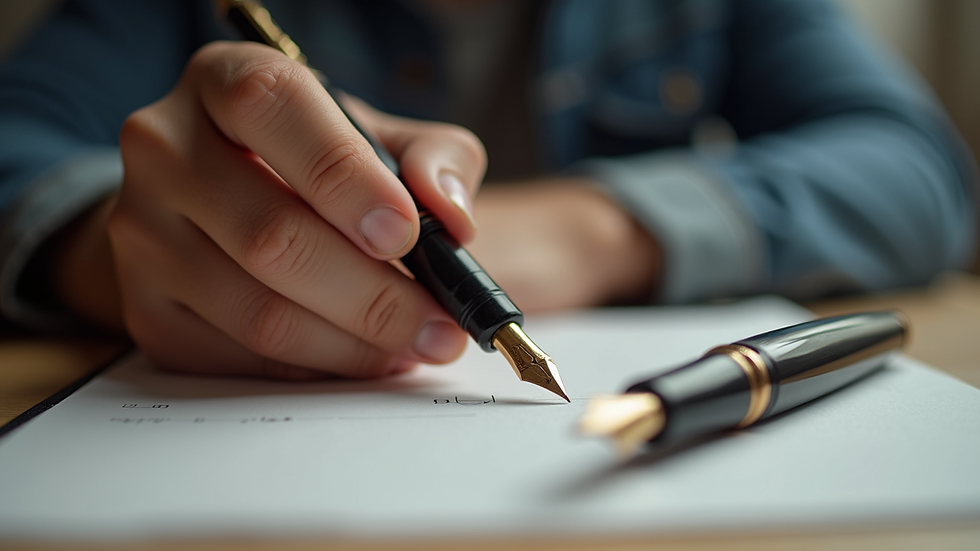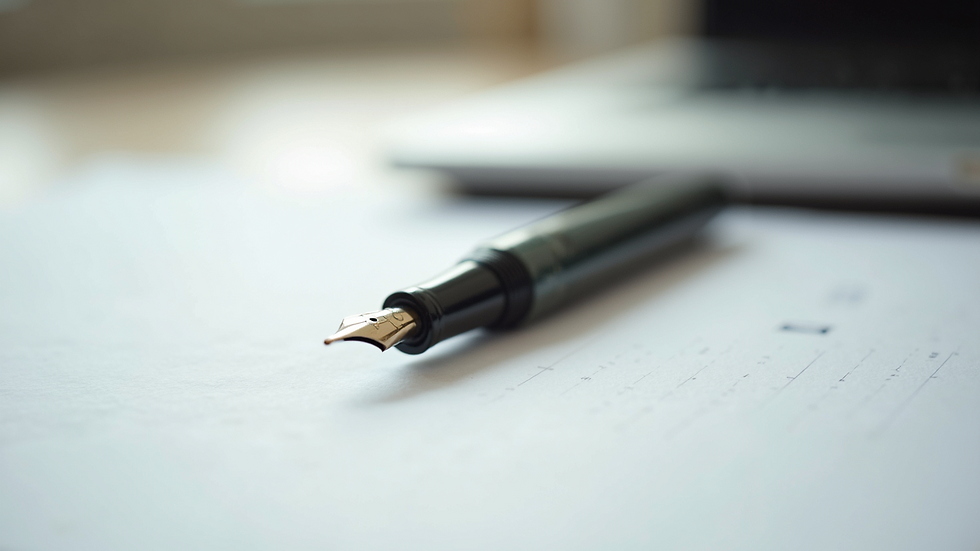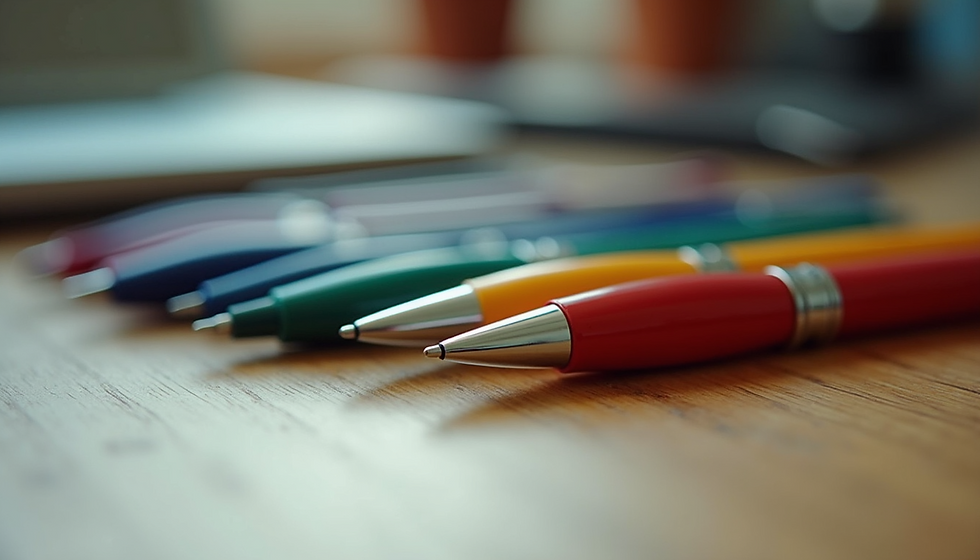An Easy Guide to Understanding Fountain Pens
- Bill Bolding

- Jul 21
- 4 min read
Fountain pens are more than just tools for writing—they're an experience. With their rich history and the craftsmanship behind them, fountain pens appeal to both novice and experienced writers. This guide will help you understand what fountain pens are, their components, how to choose one, and much more.
The Fountain Pen Guide to Writing Instruments
Fountain pens use a combination of gravity and capillary action to deliver ink to the nib. Unlike ballpoint pens, which rely on a small ball bearing to dispense ink, fountain pens actively draw ink through the nib. This creates a smoother writing experience, which many prefer for long writing sessions.
Fountain pens use different types of ink, generally water-based, allowing for a wide array of colors and shades. This is one of the reasons why they are favored by artists and calligraphers alike. If you're looking to dive deeper into the world of fountain pens, you can check out our comprehensive fountain pens guide.

Components of a Fountain Pen
Understanding the components of a fountain pen can make a significant difference in your writing experience. Here are the primary parts you should know about:
Nib
The nib is the hard metal tip of the pen that delivers ink to the paper. Nibs come in different sizes and widths, affecting the thickness of your writing. Common widths include fine, medium, and broad.
Feed
The feed is situated directly beneath the nib and regulates ink flow. It draws ink from the ink reservoir and helps distribute it evenly while writing. Different designs impact how smooth or fast the ink flows.
Body
The body of the pen is the casing that houses the nib and feed. Bodies can vary significantly in material—from plastic to metal to wood. The choice of material affects the pen's weight, balance, and appearance.

Ink Reservoir
Fountain pens have various ink reservoirs, the most common being cartridges, converters, and built-in filling systems. Cartridges are easy to replace but may limit your ink choice. Converters allow you to use bottled ink, providing a wider selection and often a better writing experience.
Which is better, 0.5 or 0.7 pen?
Choosing between a 0.5 mm and 0.7 mm nib can be crucial depending on what you need. The numbers here refer to the width of the nib size; the smaller the number, the finer the line. Here's how they compare:
0.5 mm Nib: This size is generally considered great for detailed work, such as writing notes or doing intricate calligraphy. It provides precision but may require slightly more pressure to write smoothly.
0.7 mm Nib: This size produces a bolder line that can be more easily readable, making it an excellent choice for everyday writing. It's generally smoother and requires less pressure, which can reduce hand fatigue during prolonged use.
Ultimately, the choice comes down to personal preference. If possible, test both sizes to see which feels better for your writing style.
Benefits of Using Fountain Pens
Fountain pens offer several advantages that make them distinguished from regular ballpoint pens. Here are a few benefits:
Writing Comfort
One of the biggest benefits of fountain pens is their comfort during long writing sessions. Because they require less pressure, they can reduce strain on your hands and wrists.
Customization
Fountain pens offer a higher degree of customization. You can choose different nib sizes, shapes, and types of inks to suit your writing style and personality.
Eco-Friendly
Many fountain pens come with refillable ink systems, making them more environmentally friendly compared to disposable pens. This often results in less waste and a more sustainable writing option.
Aesthetic Appeal
Fountain pens are often beautifully designed, reflecting craftsmanship and elegance. Many collectors appreciate them not just for their utility but also as a form of art.

Choosing the Right Fountain Pen
Selecting a fountain pen might feel overwhelming due to the myriad options available. Here are some tips to help you make an informed choice:
Determine Your Budget
Fountain pens come in a wide range of prices. It is essential to have a budget in mind before you start shopping. There are excellent options available at various price points.
Test Before You Buy
Whenever possible, test different pens at a local store. Feel the weight, balance, and how smoothly they write. This hands-on experience will help you find a pen that suits your style.
Consider Your Writing Needs
Are you writing daily, or do you need a pen for special occasions? Think about what you'll primarily use the pen for, and choose a model that fits those needs.
Ink Compatibility
If you're considering a pen that uses bottled ink, ensure you choose one that works with a converter. It opens up a world of ink options that can enhance your writing experience.
Maintenance Tips for Fountain Pens
Owning a fountain pen also comes with the responsibility of caring for it. Here are some simple maintenance tips:
Regular Cleaning
Regular cleaning is essential to ensure smooth ink flow and prevent clogging. Change the ink frequently, and flush the pen with water every few weeks.
Store Properly
When not in use, store your fountain pen in a position that prevents ink from pooling in the nib and feed. A case or holder specifically designed for fountain pens is ideal.
Use Quality Ink
Opt for quality inks that are formulated for fountain pens. Lower quality inks may clog the pen, while high-quality ones flow better and often provide richer colors.
Final Thoughts on Fountain Pens
Diving into the world of fountain pens can be both exciting and rewarding. With their unique writing experience and aesthetic appeal, they have become a popular choice for many. Remember to take your time when exploring options and find a pen that truly resonates with you. Whether you're starting your collection or looking to enhance your writing tools, a fountain pen can meet your needs and elevate your writing.



